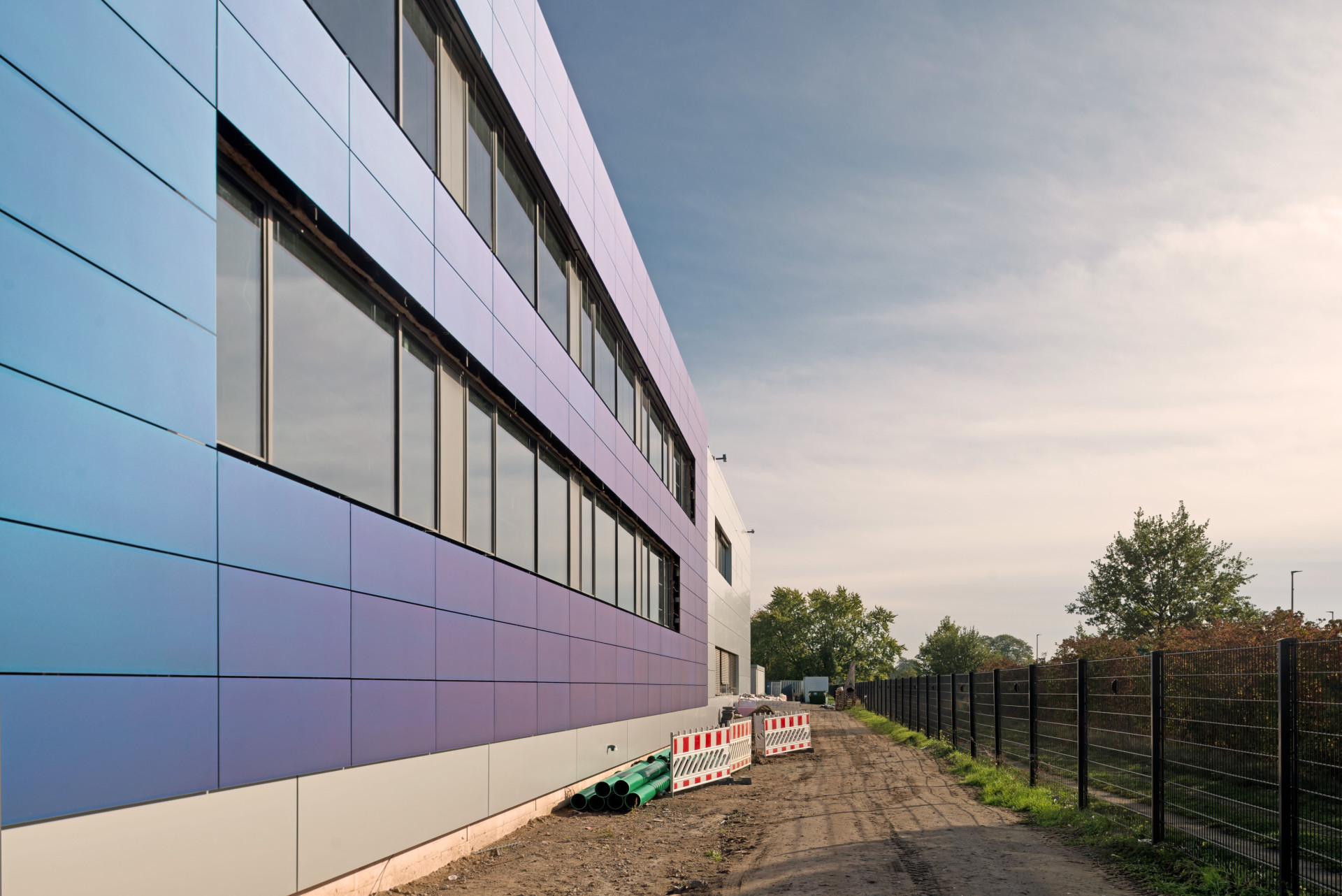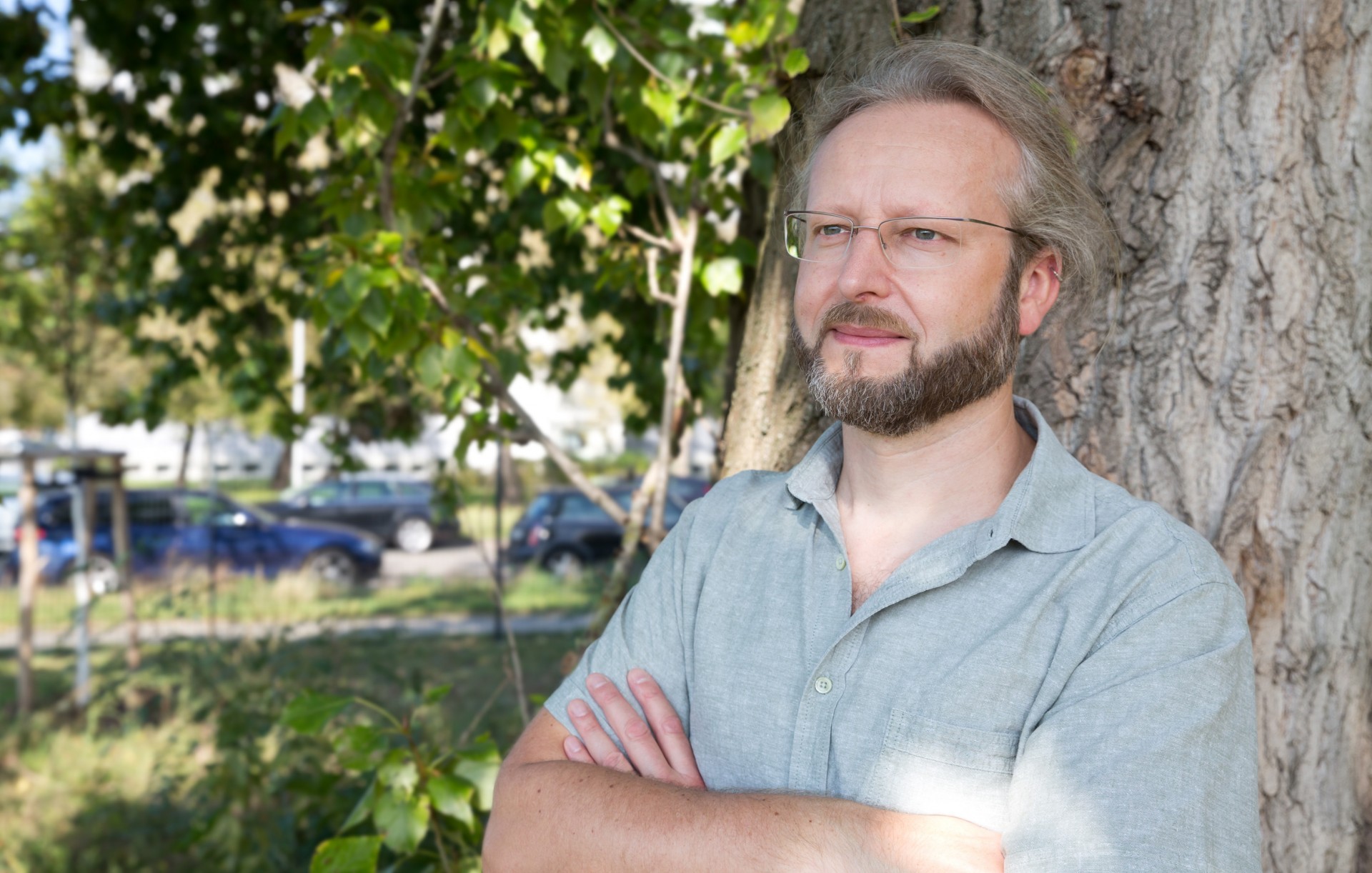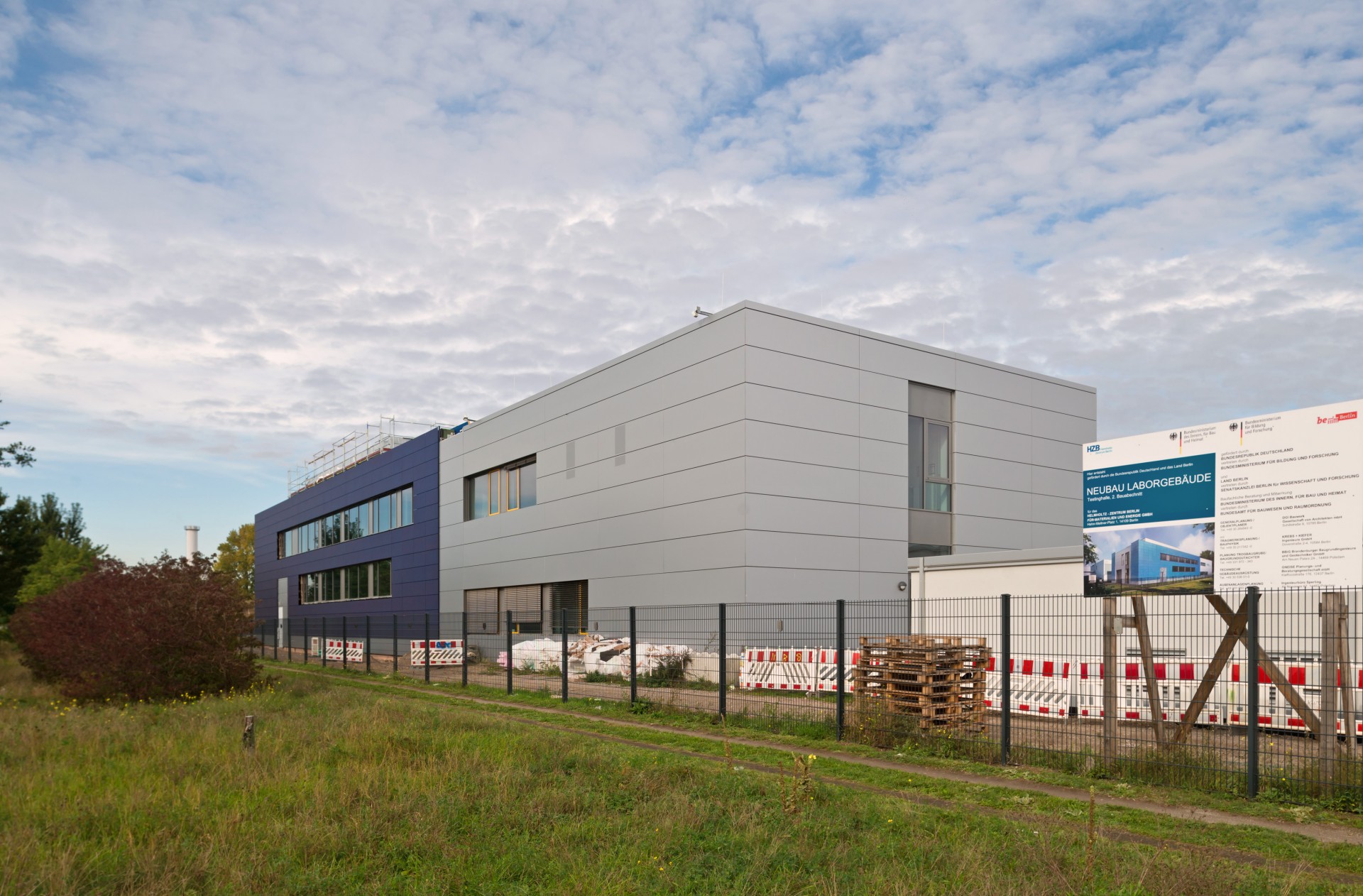Electricity from the facade
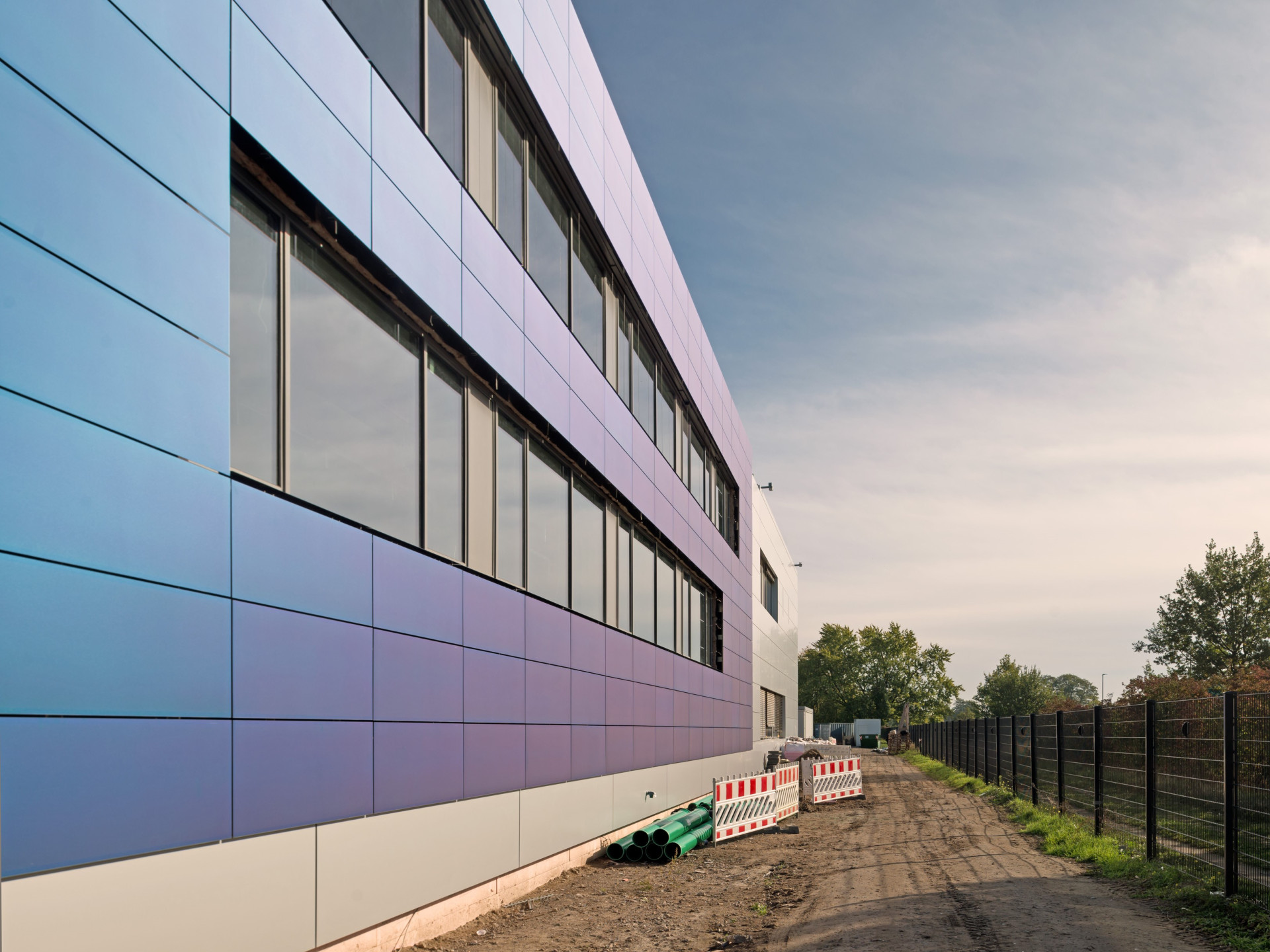

Behind the scaffolding, the panels shimmer in a bold blue. Each one of them is shaped like an opaque, rectangular window, and together, they form the attractive facade of a new building in Berlin’s Adlershof district. Depending on how the sunlight hits, it shimmers in various shades of blue. While the facade is sure to catch the eye of anyone passing by, for scientists, it is a source of clean energy with huge potential. This is why scientists want to make much greater use of building envelopes in the future to produce solar energy.

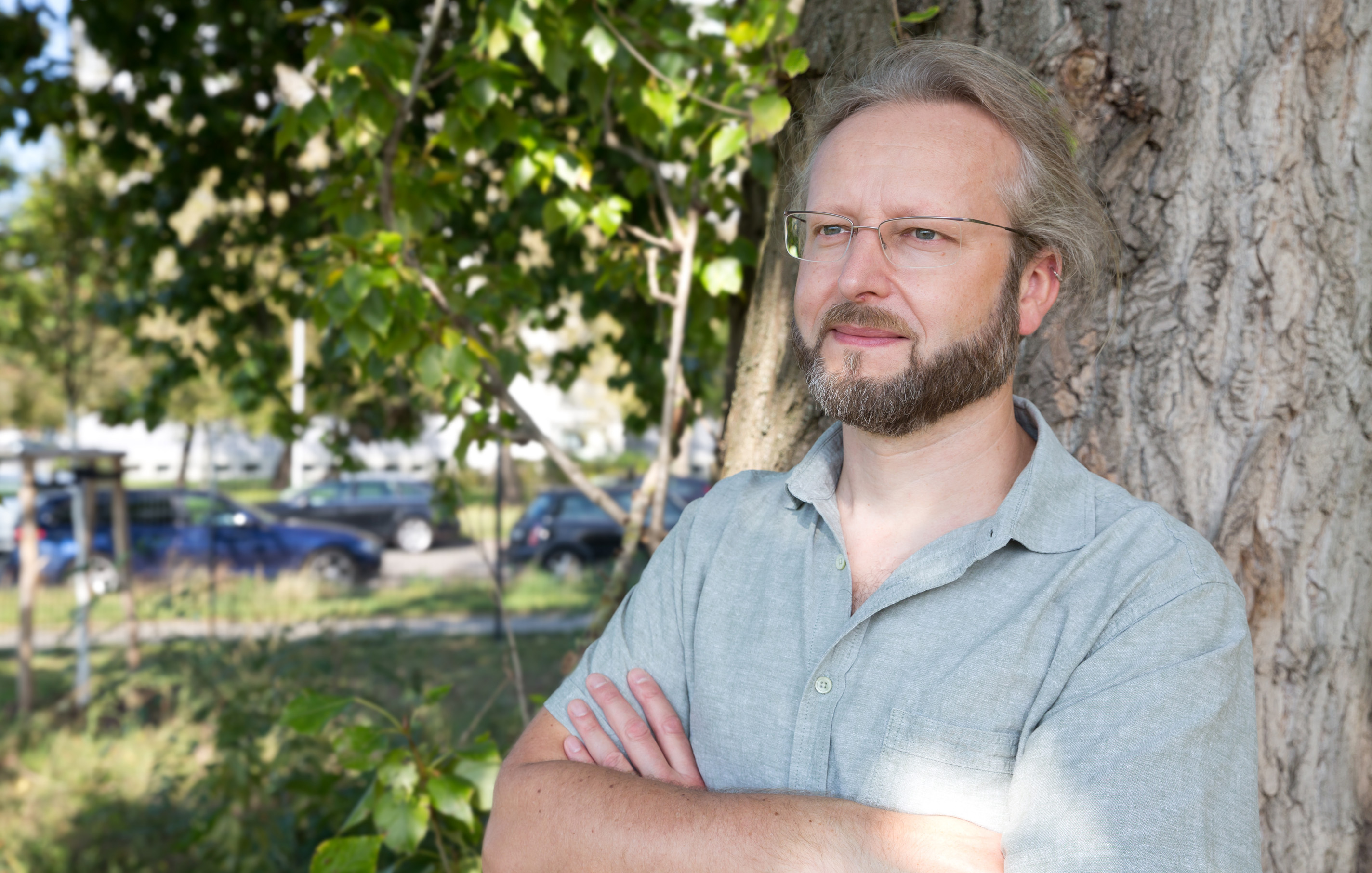
Björn Rau is one of these experts. It’s a pleasant October day, and the solar-energy specialist is standing in front of the new building of the Helmholtz-Zentrum Berlin (HZB), inspecting the final assembly work on the workshop. The new photovoltaic system will soon be supplying electricity. Its special feature? The 360 solar modules, which are visible from afar as decorative facade elements, rather than being installed on the roof and out of sight.
“There has been no other project like it before, and it’s come at exactly the right time,” says Rau. So far, people’s knowledge of photovoltaics has been limited almost exclusively to modules installed on rooftops or in greenfield solar parks, but the technology is now much more advanced and provides architects with a wide range of application and design elements. Using the facade being built in Adlershof as a field test, it will now be possible to gain valuable practical experience. “The built-in sensor technology, for example, will enable us to measure specifically how the actual weather conditions, heat, cold, rain, and pollution affect performance, and we will be able to do so across all seasons and over several years,” explains Björn Rau, who heads the Advisory Centre for Building Integrated Photovoltaics (BAIP).
Solar modules now design elements
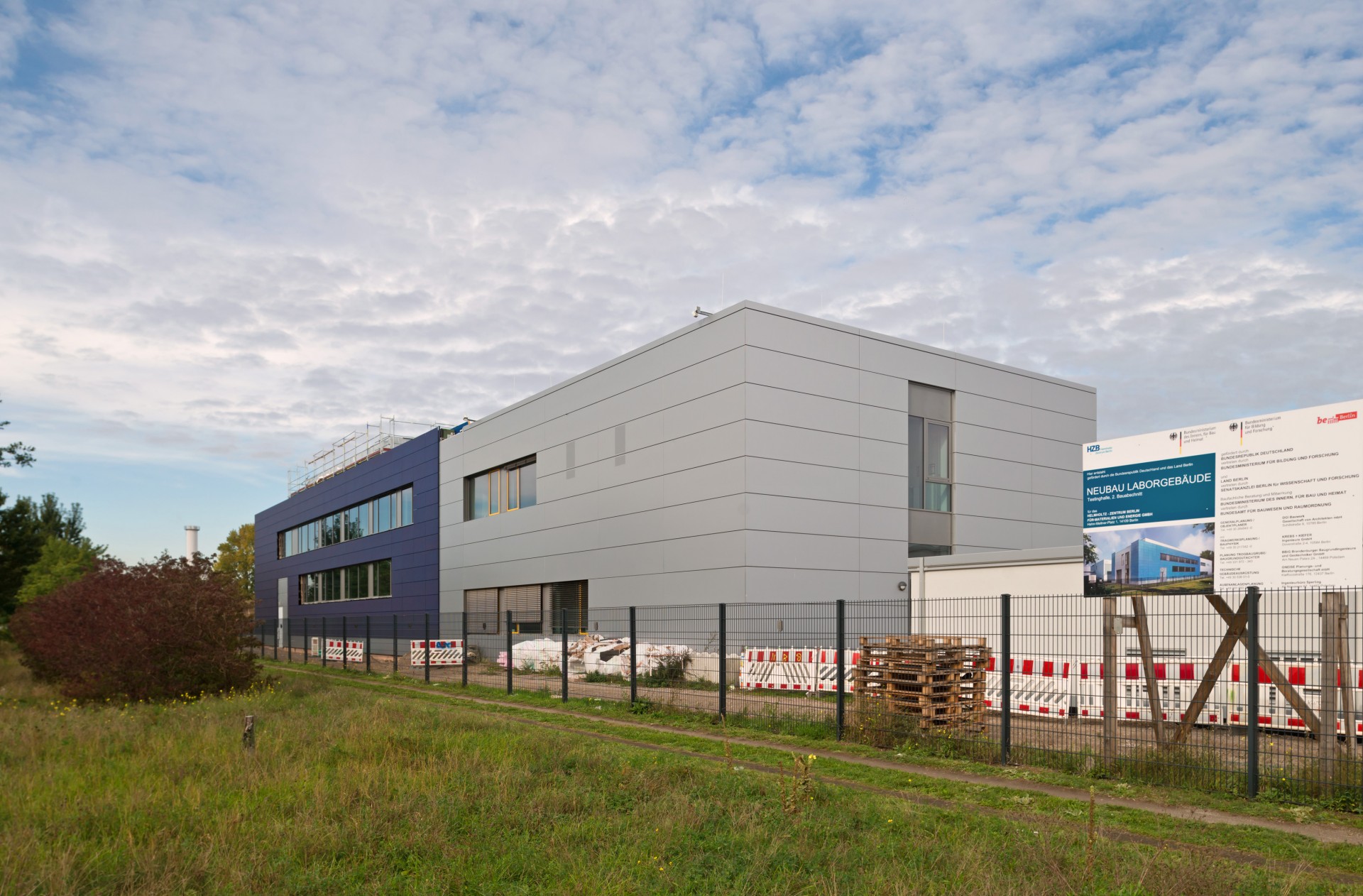
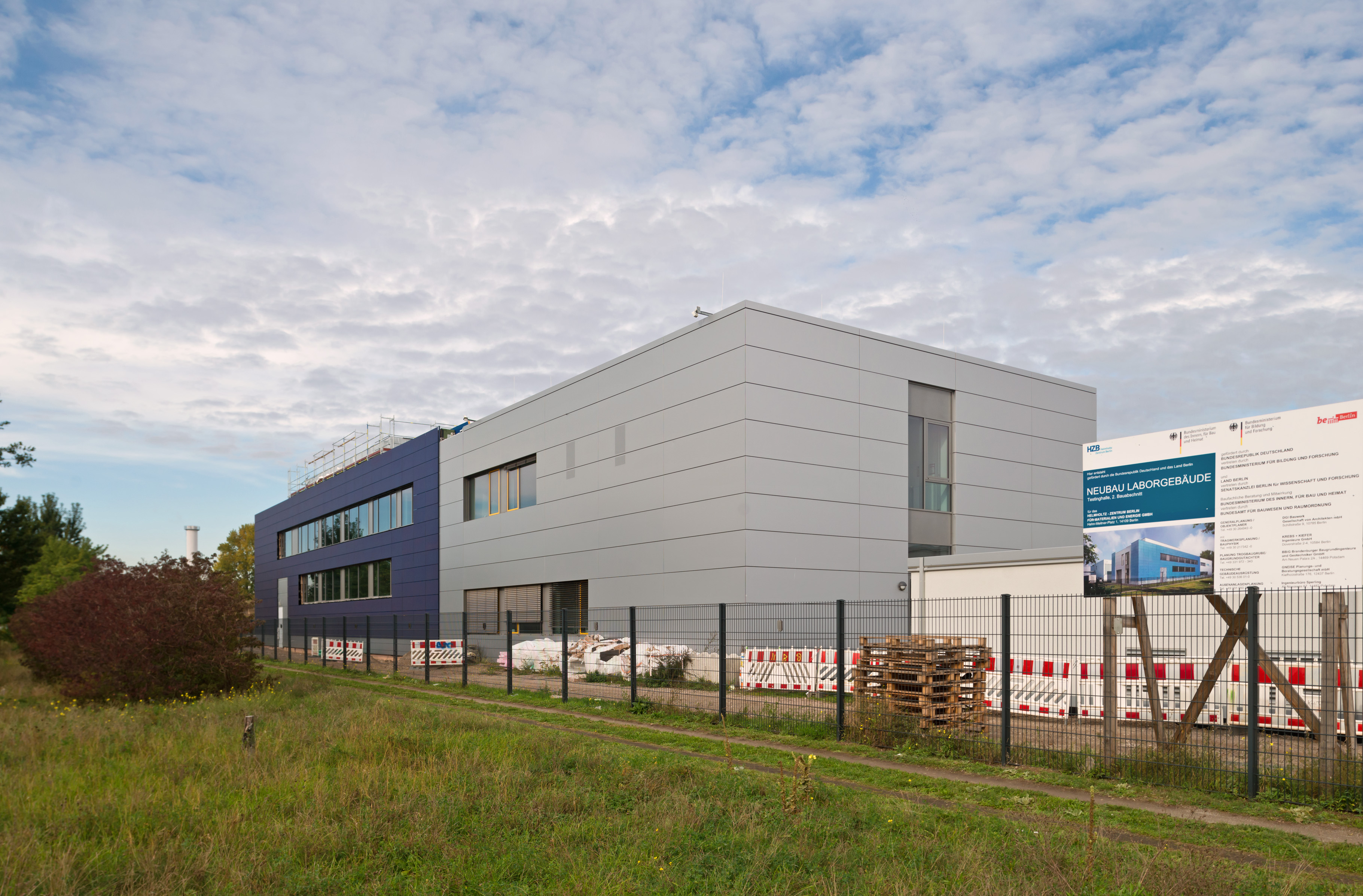
The blue shell lends an aesthetic touch to the plain hall for accelerator physics, which is a key aspect for many building owners, who still have reservations, claiming that the available modules are too complex in terms of their technology or that they are not particularly attractive. “But that is no longer true,” says architect Thorsten Kühn. Together with Björn Rau and the architect Samira Aden, he advises architects, investors, and urban planners and developers. Today, modules come in different colors and shapes that can be incorporated as design elements into the facade or building envelope.
“We offer free, neutral advice provided independently of individual manufacturers and show what technologies are already available,” says Rau.
“We also advise people specifically on technical aspects, such as fire safety or statics. Of course, we show them what design options are already available as well,” adds Kühn, who, in his role as architect, has already completed construction projects involving solar facades.
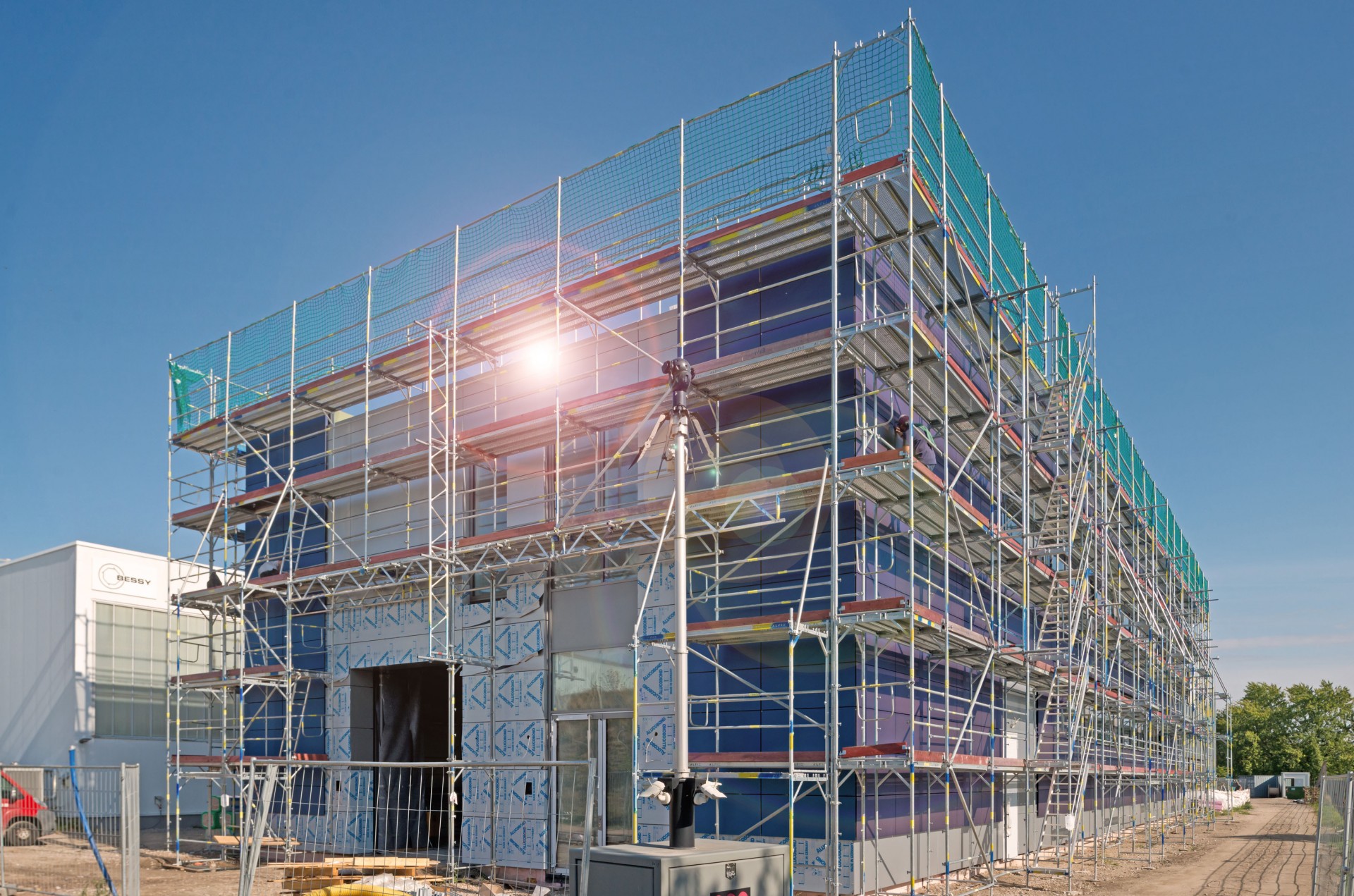

There is an urgent need for such advice, because while the building boom in Germany continues apace, the way buildings are constructed is still often based on traditional ideas, such as all-glass towers made of energy-intensive steel and concrete, which have high operational energy demands as well.
However, if we are to meet the climate targets, all existing buildings will need to be virtually climate neutral by 2050. That poses a colossal challenge. It will mean needing to drastically reduce the carbon balance for new buildings and for retrofits. Buildings that provide their own power stand to play an important role in achieving such a reduction.
But according to Rau, building-integrated photovoltaics can do much more. Using building envelopes, it would be possible to generate enough power to satisfy up to one third of the electricity consumed in Germany. “There are vast areas available,” says Rau, who suggests making extensive use of them. “In fact, if we include the surfaces of facades, it would be possible to modify larger buildings in particular to generate surplus energy,” says Kühn. Using 3D software, the experts are able to determine the annual yield potential of the facade-mounted solar installation, even factoring in trees and adjacent buildings that might cause shade.
Space on rooftops scarce
In BAIP’s first year, Kühn, Aden, and Rau provided advice for some 50 projects, including schools, hospitals, and administrative buildings. “If owners are obligated in the future to mount solar installations on their buildings, it would be important in the legal text not to focus exclusively on roof systems and instead leave it open as to where solar energy may be generated. Space on rooftops is scarce, and sometimes building owners prefer having a green roof or a roof terrace. In such cases, facade installations can be a good alternative,” says Rau.
Green energy for clean energy sources
The findings of Björn Rau and his team will also be incorporated into the efforts of the Helmholtz Climate Initiative. As part of the “Circular CO2 approaches” project, they are exploring sustainable ways of producing energy by extracting carbon dioxide from the atmosphere and converting it into fuels, for example. In this way, it is possible to use carbon within a closed loop.
For the city of the future, dealing with the energy supply is an important issue, but it is not the only one, as Kühn notes. Parks and urban ventilation corridors that bring fresh air into the city are needed to ensure that the urban climate even remains bearable during heat waves. The city of the future must also be equipped to handle heavy rains as a so-called sponge city. With additional trees and green roofs, for example, a sponge city can store rainwater better and allow it to drain away later or evaporate again.
“And in terms of building materials, we should use more wood rather than steel and concrete. It is possible nowadays to construct multi-story buildings and even high-rises out of wood,” says Kühn. To ensure that such multi-story buildings are climate neutral even when in use, smart building technology is needed. Heat recovery from gray or process water and ventilation systems or heat pumps can help in this regard. A facade-mounted solar installation is another component. In the city of the future, there will be many buildings that generate power themselves – and for many of them, it won’t even be possible to tell.
